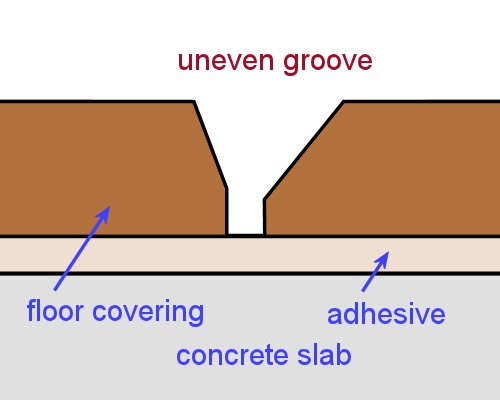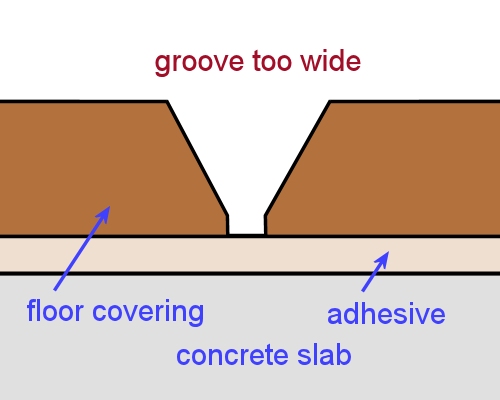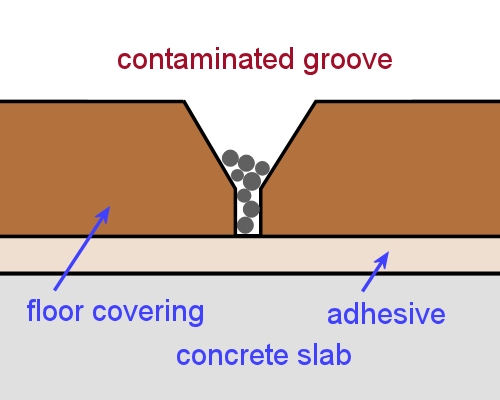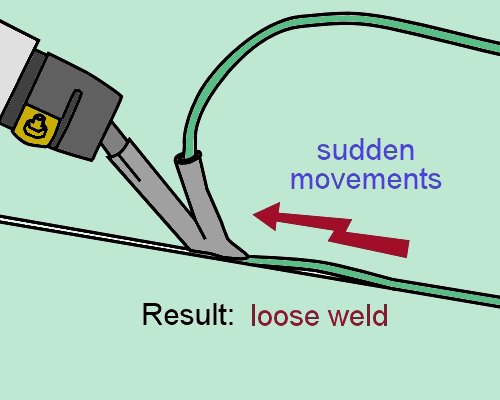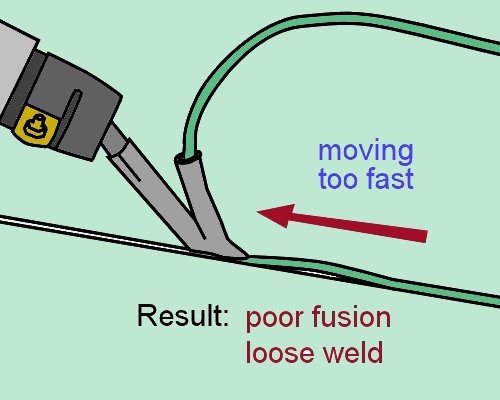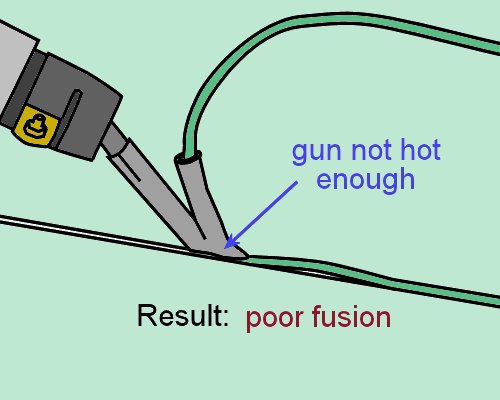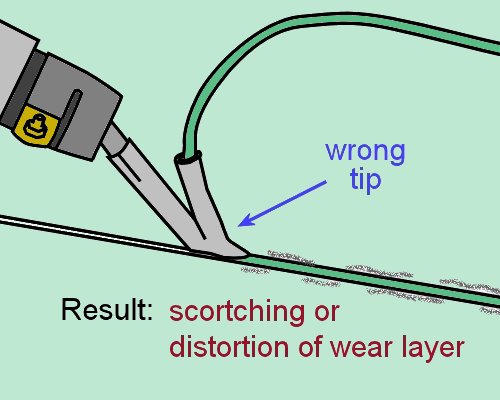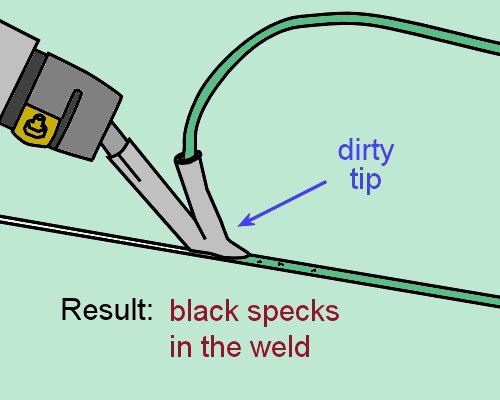Heat welding problems
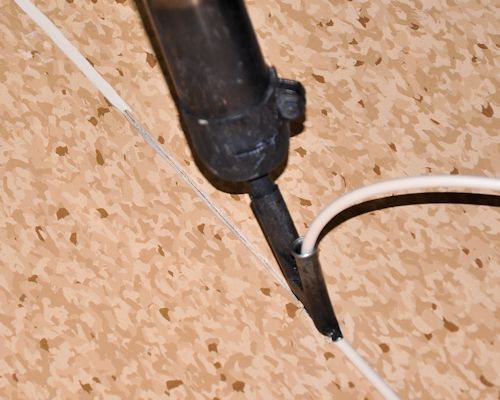 Audio for slide 1 (mp3 |6|KB)
Audio for slide 1 (mp3 |6|KB)
There are lots of reasons why welds fail. Sometimes it is due to problems in the materials or subfloor. Other times it's simply due to a lack of skill or knowledge in the process.
However, heat welding is like most other skills, in that the more you practise the better you'll get.
Below are some of the common problems that can occur with welds. They are summarised from an article on the Floor Trends website called 'Why did the heat melt fail?' To access the full article, go to the website at the link below, and register your name. Note that registration is free.

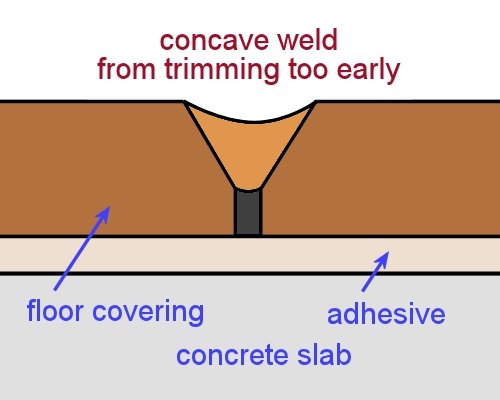 Audio for slide 12 (mp3 |6|KB)
Audio for slide 12 (mp3 |6|KB)
Trimming
Trimming too early or too late
The timing of the first trimming pass is determined by the material you're welding.
With commercial vinyl you should do the first pass while the weld is still warm, and then let it cool completely before doing the second pass.
If you're too quick with the second pass, you might end up with a severely concaved weld.







